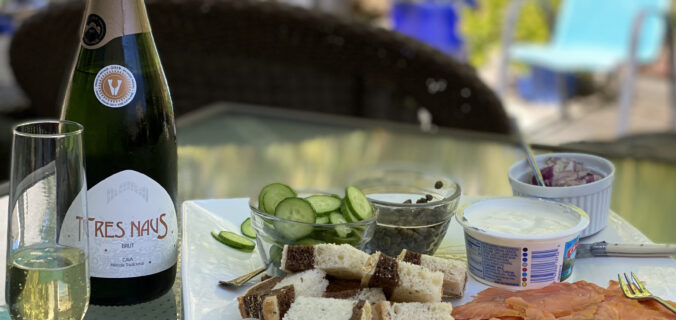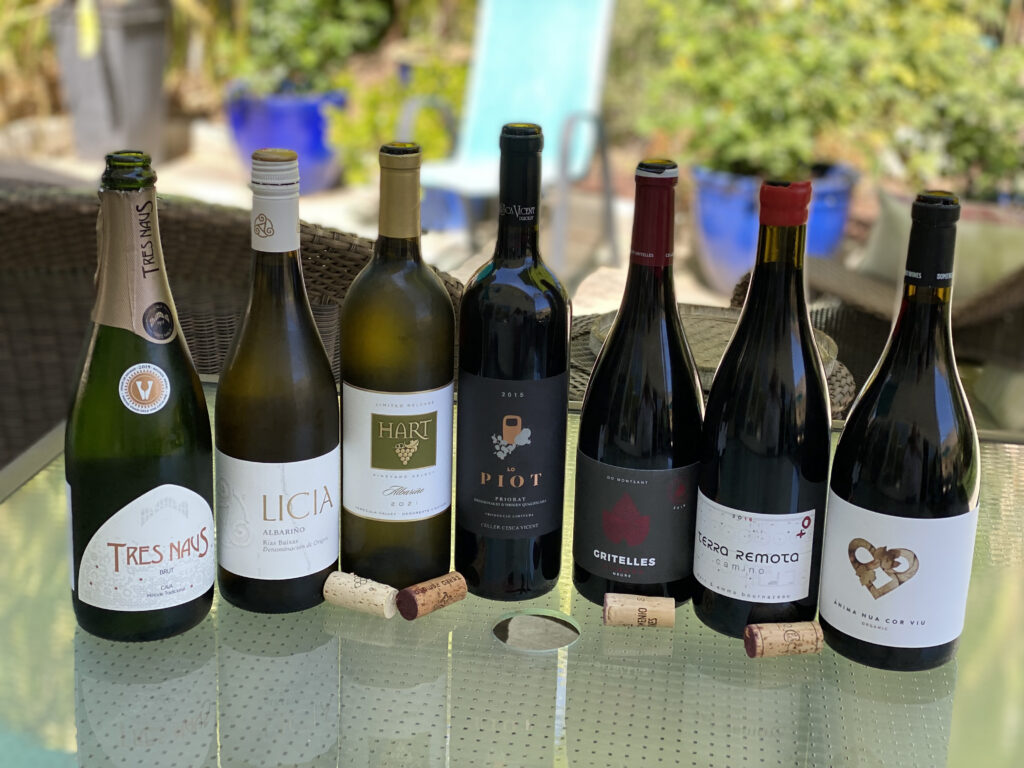
The wines our Wine Review Council paired several weeks ago were from Catalonia, the northeastern region of Spain that is bordered on the north by France and on the east by the Mediterranean Sea. Barcelona is the largest and best known city in this area. Viticulture first started in this region by the Phoenicians and the Greeks around 400 B.C.
The wines of this region have a strong French influence, in particular in their sparkling Cava (produced in the traditional champagne method) and in its red table wines.
Cava is the name given to the sparkling wines of Spain. Cava can only be called Cava if it is made in the traditional method and why it’s called la méthode champenoise. The majority of Cava is produced in the Catalonia region of Spain. Cava has a huge international presence because of the quality to price ratio.
The main types of grapes used in the production of cava are the Macabeo, the Parellada and the Xarel·lo – all of which bring their own unique characteristics to the sparkling wine.
Macabeo – brings sweetness and perfume to the Cava
Parellada – brings subtlety, freshness and scent to the Cava
Xarel·lo – brings body and structure to the Cava
The first stage of the process used to make Cava and Champagne is a crushing to make grape must. Then the must is removed, and the still wine is placed in large tanks where they may blend the grapes.
From there, the next step is tirage where the wine is put in bottles. Here the licor de tirage is added to the bottle–a blend of sugar, wine, and yeast—that produces carbon dioxide and that nose associated with Cava. With this process, the wine is laid horizontally and left to age at least 9
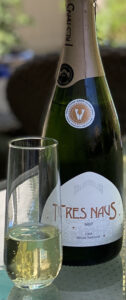
months in a cool and dark environment.
After aging, a large amount of sediment needs to be removed. In the past, a winemaker would have to swirl around the wine so that the sediment would float to the top—a time consuming process. Today they use a method called gyropalette, a machine that can swirl several bottles at a time. Then
they freeze the neck of the bottle, the cork is removed, and the sediment that is caught in the block of ice is removed. Any empty liquid is then replaced by licor de expedicion (a mixture of sugar and wine.) How much sugar is added at this time determines what kind of champagne will be created. At this stage, the cork is added along with the wire cage.
Cava Tres Naus Brut comes from the province of Tarragona in the Conca de Barbera region and has been aged using the champagne method in the bottle on the lees inside the “cathedral of wine” called Rocafort de Queralt built in 1918 by Cèsar Martinell. He built around 40 wineries, showing his strong influence by Gaudi. Cellers Domenys is part of a coop that represents this Cava. The Rocafort de
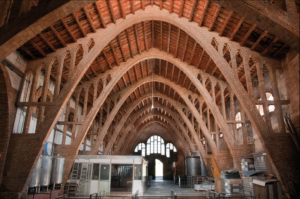
Queralt is a place exclusive for the production of cava.
This cava–composed of the grapes used in this region of Xarel-Lo, Macabeo, Parellada, and Chardonnay–is fruity but not overly sweet, has a nose of white flowers, is fresh, and has a creamy finish with continuous bubbles.
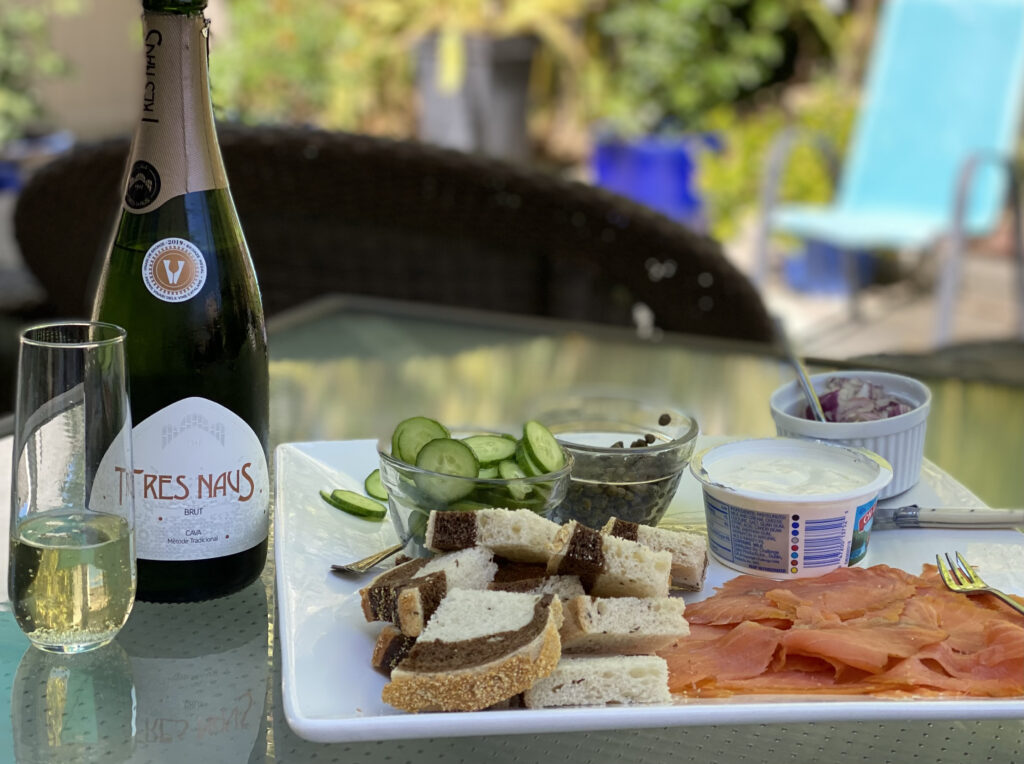
We paired it with smoked salmon and cream cheese on rye bread with capers and chopped onion. Fish pairs exceptionally well with cava. The cream cheese balanced the acidity, and the saltiness of the capers contrasted with the creaminess of the cava.
Cheers to many more bottles of delicious bubbly! Thank you to Colangelo & Partners for sharing a bottle of this Cava with our group.
